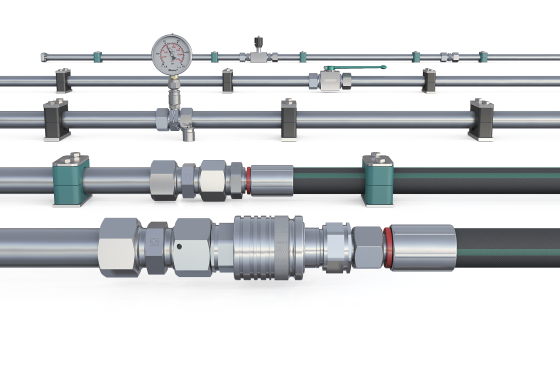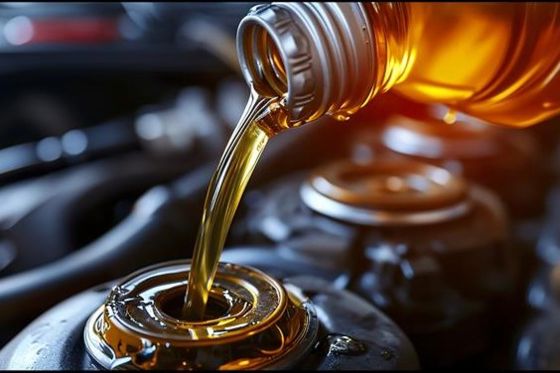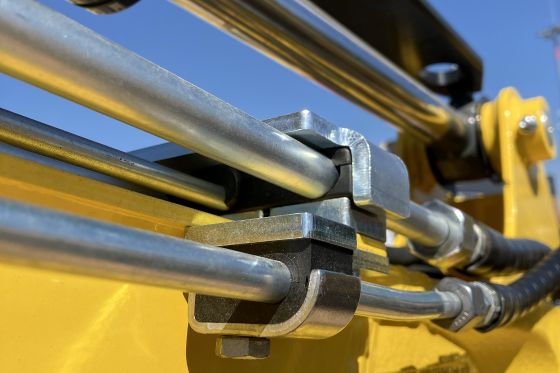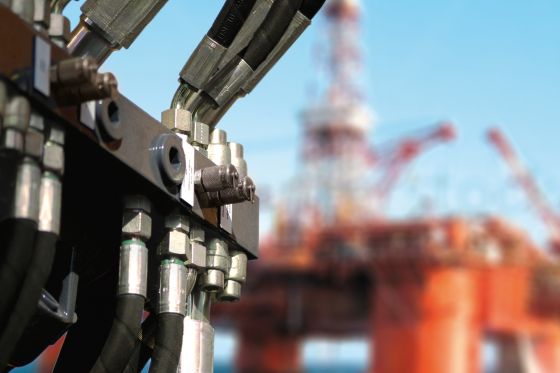Table of contents
- Introduction: Hydraulics and its pioneers
- The lives of Reynold Janney and Harvey D. Williams
- Discoveries in hydraulics - oil instead of water?
- The big breakthrough in 1905: The first hydrostatic transmission with mineral oil
- The legacy of Reynold Janney and Harvey D. Williams for STAUFF
- FAQ: Frequently asked questions
Introduction: Hydraulics and its pioneers
Hydraulic systems have become an integral part of modern industry - they move machines, lift loads and drive innovation. But how did oil hydraulics become the indispensable component that it is today? Two personalities played a key role in shaping this development: Reynold Janney and Harvey D. Williams. Their visionary ideas created the foundation on which STAUFF builds every day as a manufacturer of modern hydraulic solutions. In this article, we honour their legacy, which continues to shape the hydraulics industry to this day.
The lives of Reynold Janney and Harvey D. Williams
The American Reynold Janney was born on 4 July 1858 in Martinsville, Clark Township, in the US state of Ohio. He died on 7 October 1938. Janney was an influential inventor with a passion for technology and engineering. Harvey D. Williams, born in Shaftsbury, Connecticut in 1864 and died on 9 March 1931, shared his enthusiasm and drive for innovation. Together they are rightly regarded as outstanding optimisers of hydraulics.
Discoveries in hydraulics - oil instead of water?
It is undisputed that Reynold Janney and Harvey D. Williams played a decisive role in advancing hydraulic technology. Janney laid the theoretical foundations by recognising the potential of mineral oil as an optimal power transmission medium. Before his time, mainly water or air had been used as a fluid. However, Janney quickly realised that oil was the fluid of the future due to its density, good lubricating properties and corrosion resistance.
Janney's contemporary Harvey D. Williams put these discoveries into practice. As an engineer, he developed the first hydraulic pumps and valves that were specially designed for use with oil. This led to machines that were more efficient and durable than ever before.
The big breakthrough in 1905: The first hydrostatic transmission with mineral oil
In 1905, Reynold Janney and Harvey D. Williams brought their expertise together and developed a hydrostatic transmission with an axial piston design that was driven by mineral oil for the first time. What sounds complicated at first can be explained as follows:
In this transmission, a pump mechanism presses mineral oil onto pistons that rotate in a housing. The pistons transfer the torque to a shaft, which releases mechanical energy. This energy is used to drive machines or vehicles. The ability to control the power of the gearbox by tilting the pistons was a particular source of enthusiasm in the construction machinery, aviation and automotive industries.
The legacy of Reynold Janney and Harvey D. Williams for STAUFF
The pioneering work of Janney and Williams has significantly influenced the current state of hydraulic technology. In Germany alone, around 150,000 tonnes of hydraulic oil flow through hydraulic systems every year. This is where STAUFF comes in: As a manufacturer of hydraulic components, STAUFF continuously optimises its products to make them even more efficient and reliable for use with hydraulic oils. This commitment is constantly driving innovation and reliability in the industry.
FAQ
Who were Reynold Janney and Harvey D. Williams?
What was so special about their breakthrough in 1905?
They developed the first hydrostatic transmission with mineral oil, which was designed as an axial piston design and enabled power to be controlled by tilting the pistons.
What significance do their developments have for today's hydraulics?
The foundations laid by Janney and Williams still influence the development of hydraulic systems today, particularly in terms of efficiency and reliability.
How does STAUFF carry on its legacy?
STAUFF continuously optimises hydraulic components to make them more efficient and reliable for use with hydraulic oils.
Curious about other pioneers of hydraulics?
You can also read our articles on William George Armstrong, Blaise Pascal and Joseph Bramah. Discover how visionary thinkers revolutionised hydraulic technology and laid the foundations for today's industry.

Newsletter Subscription
Subscribe to the newsletter now and don't miss any new posts






